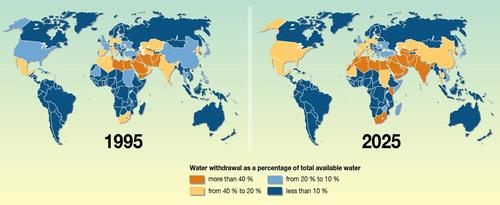Resource under pressure/water crisis
Water scarcity occurs when the amount of water withdrawn from lakes, rivers or groundwater is so high that water supplies are no longer adequate to satisfy all human or ecosystem requirements, resulting in increased competition between water users and other demands. (UNEP 2008)
Water overuse is damaging the environment in many major basins. High overuse tends to occur in regions heavily dependent on irrigated agriculture, such as the Indo-Gangetic Plain in south Asia, the North China Plain and the High Plains of North America, and in areas undergoing rapid urbanization and industrial development. An estimated 1.4 billion people live in river basin areas that are ‘closed’ (in which water use exceeds minimum recharge levels) or near closure. As millions of people in water-stressed areas are discovering, the environment is restricting an extensive and unsustainable use of water by limiting the water available. (UNEP 2008)
The crisis in water pollution exerts social and economic pressure everywhere in the world and is worsened by:
- frequent waves of droughts
- resulting water shortages
- floods due to water excess
Water pollution is caused by:
- poor wastewater management
- unfair allocation of water
- rampant deforestation
- soil overexploitation
- population explosion
Therefore, management of the quality of both surface water and groundwater should be integrated. This includes the management of the quantity of water as part of implementation of IWRM as well as planning management frameworks at local, national and transboundary level. Appropriate water and environmental laws and accompanying regulations such as wastewater discharge regulations and environmental impact assessment regulations are key legal and regulatory instruments for governing water allocation, environmental assessment and pollution control as well as key water resources management activities (UNESCO 2016).


